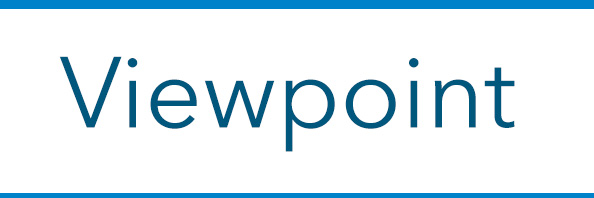Jennine Wilson is an adult learner success story, having returned to school after working various jobs since she was 13. She received her associate degree in health information management from Indian River State College in the spring of 2022 and is now preparing to pursue her bachelor’s degree. But like many students, her pathway to success required her to navigate college algebra — and to do so online during the pandemic.

“I was 49, and I tend to learn better in person,” said Wilson. “I hate math, and not being able to get that face-to-face breakdown made me apprehensive.”
For some adult learners at community colleges, the continued transition to online learning has been challenging at times. One solution some institutions have turned to is adaptive courseware, which tailors assignments and generates personalized learning pathways based on each student’s proficiency.
“Students come to the community college from such different backgrounds and skillsets,” says Edie Carter, dean of STEM at Amarillo College in Texas. “Adaptive brought to us something we could explore that allows students to own their learning…. and to help who we’ve been missing.”
Tracking their own learning
The need to support adult learners like Wilson as they return to college for degrees and training has only grown greater as the pandemic abated. At the close of 2021, there were 4.6 million more job openings than unemployed workers, according to the U.S. Department of Labor, and the longstanding mismatch between skills and jobs has accelerated. According to a recent McKinsey report, as many as 17 million workers may need to transition to new jobs after the pandemic, and nearly half of American adults consider themselves underemployed, underpaid or not reaching their full potential, according to a survey reported on by the Hechinger Report, which said that more than one in three wanted new careers.
For Wilson, who enrolled in a health information technology program with aspirations of starting her own medical billing and coding company, adaptive courseware helped her successfully complete an intermediate algebra class — a challenge which has taken on added importance at institutions where remedial or developmental courses have been eliminated as part of state-level or institutional reforms.
“I didn’t have to feel uncomfortable about not getting something right away,” she says. “It afforded me the luxury of being able to not have to keep asking my professor [for help] by giving me the tools to solve the problem.”
A pilot project of adaptive courseware serving more than 7,500 students at seven community colleges in the Achieving the Dream (ATD) Network found that many adult learners reported similar experiences. The Every Learner Everywhere Adaptive Courseware for Early Success Initiative found the technology helped students track their own learning and master complex topics in disciplines ranging from math and science to business, English, and psychology through guided practice outside of class time.
However, students enrolled in classes piloting adaptive courseware shared experiences where the technology was less effective, or at times even counterproductive to supporting their learning. In most cases, they pointed to disconnects between the material in their courses and the adaptive products they were using outside of class, often in lieu of other homework or quizzes. Their experiences across multiple campuses reinforce the importance of ensuring that technology is thoughtfully aligned and integrated into learning.
Tips for better integration
Among strategies surfaced during the Every Learner Everywhere initiative that can ensure adaptive courseware helps adult learners — and all students — be successful:
Ensure courseware fits the courses it is used in, including aligning adaptive materials with course learning objectives and sequentially mapping assignments to specific course activities or sections. It’s also vital to monitor pacing, usage and student experiences to ensure that courseware continues to meet student needs as courses progress.
Given the importance of alignment, faculty must take a leadership role in evaluating, selecting, implementing and tailoring courseware to meet learning objectives. Many of the most successful implementations during the Every Learner Everywhere initiative came when faculty teams introduced adaptive courseware as part of broader course redesigns with the goal of reducing DFIW rates.
Ensure courseware is transparent and allows faculty to evaluate and adjust metrics. Many instructors found themselves adjusting settings within courseware, including modifying default pass rates, to keep students from becoming trapped in endless loops of adaptive work without being able to progress. Conversely, other faculty worried that some adaptive products didn’t provide sufficient visibility into the work students were doing within the courseware.
Introduce students to courseware and ensure they can navigate it successfully. While recent high school graduates are accustomed to using online courseware — and in some cases adaptive products — adult learners may be less comfortable with instructional technology. In all cases, but especially for adult learners, it’s important to ensure that students understand the concept of adaptive practice so they don’t become frustrated by repetitive questions while mastering concepts. It’s also vital to ensure students have internet connectivity for out-of-class adaptive assignments and that courseware has clear language to support multilingual learners.
Prioritize cost and access. When properly implemented, adaptive courseware can be used as a replacement for more costly textbooks. At Indian River, for example, the switch to adaptive courseware in one course cut costs by 60%, saving students $200,000. When combined with open educational resources (OER) and Z-course and first-day initiatives that include course materials in course registration, lower-cost adaptive courseware also can ensure that more students have access to learning materials, boosting engagement and overall success.
Path to success
When those challenges are addressed, adult students often found that adaptive courseware helped them manage the return to college and, at times, new ways of learning. For Amarillo College student Katie Cisneros, who decided to return to college to pursue an AAS in computer science after her job as a dental insurance coordinator was outsourced, adaptive courseware was an essential part of taking paired support and credit-bearing courses in English composition — both taught by the same instructor, who aligned work across both courses and the adaptive courseware.
“To me, it was organized, planned out, and that’s what made it so successful,” says Cisneros, who said adaptive courseware helped provide “more ways to help me believe I can do the work.”
* * *


Dr. Ruanda Garth-McCullough, director of program development at Achieving the Dream, leads the Every Learner Everywhere digital learning initiative at Achieving the Dream.
Paula Talley is executive director of program development at Achieving the Dream.

